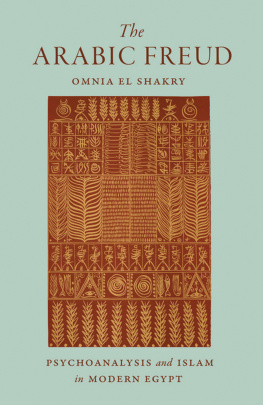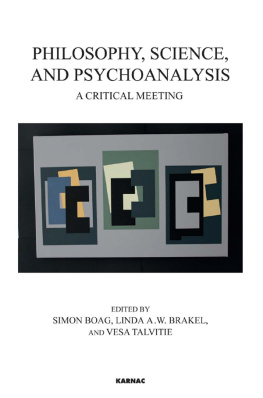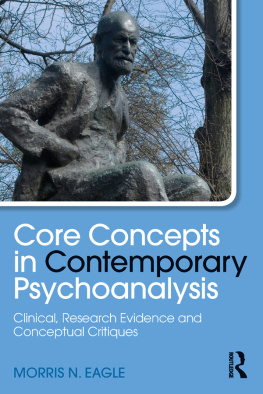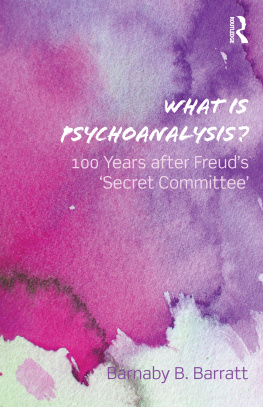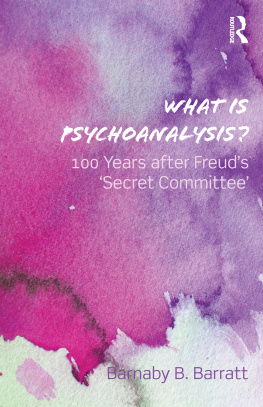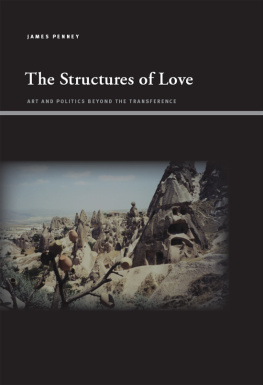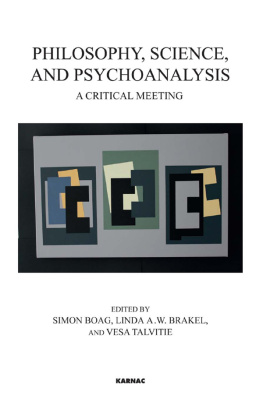Wish-fulfilment in Philosophy and Psychoanalysis
The tyranny of desire
Tamas Pataki

First published 2014
by Routledge
27 Church Road, Hove, East Sussex, BN3 2FA
and by Routledge
711 Third Avenue, New York, NY 10017
Routledge is an imprint of the Taylor & Francis Group, an informa business
2014 Tamas Pataki
The right of Tamas Pataki to be identified as author of this work has been asserted by him in accordance with sections 77 and 78 of the Copyright, Designs and Patents Act 1988.
All rights reserved. No part of this book may be reprinted or reproduced or utilised in any form or by any electronic, mechanical, or other means, now known or hereafter invented, including photocopying and recording, or in any information storage or retrieval system, without permission in writing from the publishers.
Trademark notice: Product or corporate names may be trademarks or registered trademarks, and are used only for identification and explanation without intent to infringe.
British Library Cataloguing in Publication Data
A catalogue record for this book is available from the British Library
Library of Congress Cataloging in Publication Data
Pataki, Tamas.
Wish-fulfilment in philosophy and psychoanalysis : the tyranny of desire / Tamas Pataki. 1 [edition].
pages cm
Includes bibliographical references.
1. Desire. 2. Desire (Philosophy) I. Title.
BF575.D4P38 2014
150.19'5dc23
2013047536
ISBN: 978-0-415-82292-3 (hbk)
ISBN: 978-0-203-55308-4 (ebk)
Typeset in Bembo and Gill Sans
by Sunrise Setting Ltd, Paignton, UK
Contents
4.5 Unconscious deliberation and symbolism
Bibliography
But thoughts the slave of life and life times fool
Shakespeare, Henry IV, Part I
For much of the first long stint of my post-graduate efforts in philosophy, many years ago, I was in psychoanalysis with Dr. Clara Geroe, Australias first Training Analyst, and like myself an Hungarian emigre. She was already old and very frail when analysis commenced and afflicted with what bureaucrats call time management issues. Patients arriving at the appointed hour could find themselves waiting in the corridor, or sent down for coffee, or secreted in the tiny office as others were anonymously exchanged between consulting and waiting rooms Dr. Geroe was a great stickler for patient anonymity. Many times I would spend half an hour, an hour or more in the waiting room. But this was a boon because the room served in those days as the library of the Melbourne Institute of Psychoanalysis and thus I had at my disposal the journals and a fair collection of books in what was already a vast psychoanalytic literature.
My reading was desultory. D. W. Winnicott and Otto Kernberg and some of the now largely forgotten founders of psychosomatic medicine, Franz Alexander and Felix Deutsch, attracted me. Later Dr. Geroe directed my reading to Anna Freud, Heinz Hartmann and Margaret Mahler. Although Civilization and its Discontents had been an undergraduate text I didnt pay attention. My interests then were in philosophical logic and I deprecated the human sciences with the typical immaturity of the young logician. It was not till much later that I read Freud systematically.
I think that some of the themes that run through the book were already rattling around in my head as I read in the waiting room. Winnicotts explorations of phantasy, illusion and living a dissociated life were deeply impressive and had some affinity with my own experience. The significance of wishful phantasy and play was often discussed in sessions as I reported obervations on my young nieces. The insistent clinging to illusions, of believing that wishing can make it so (as I think Peter Pan said), and dissociation or splitting of the self matters not unconnected as I came to see puzzled me, as they puzzle me still. Other themes, however, have a different origin. The psychoanalytic material I was reading, though I found it immensely suggestive, lacked rigour and a concern for the conceptual clarity that was the hallmark (or at least the aspiration) of the Analytic philosophy, the conceptual or connective analysis, that was then my school. I do not mean that the psychoanalytic material lacked scientific rigour. There are many ways in science, and the psychoanalytic approach to studying humankind principally the observations of two individuals in deep engagement over many years in relatively controlled conditions, the formulation and disconfirmation of theoretical hypotheses arising from many thousands of similar engagements, and observations of infant parent interactions remote from the laboratory or the questionnaire room though it may be, is science. True, psychoanalysis was not making much of an effort to integrate its theories within the traditional divisions of the sciences, though there were isolated bold attempts by theorists such as Heinz Hartmann and David Rappaport to make it a General Psychology. But science was not, as I saw it, the problem. Lack of conceptual clarity and analysis was.
On the other hand, although conceptual clarity, untangling the knots of language, arriving at a perspicuous overview, were by the 1980s no longer everything, and ambitious theory construction was well underway, Analytic philosophers were making unusual progress in understanding the nature of mind and its place in a physical world by careful attention to a class of difficult concepts: meaning and Intentionality (in Brentanos sense), desire, belief, deliberation, intention, decision, choice and action. All these and many related concepts self, agency, rationality - inhere in ordinary common-sense (or as we shall say, Intentional) psychology, are garnered on mothers knee, refined perusing Henry James, and used to make sense of other people and ourselves. And the trouble was that psychoanalytic theory at the time, though recognising that these concepts constituted the communicative medium of the clinic of the clinical theory - had little reflective interest in them; nor in coordinating its indigenous technical concepts such as drive and phantasy with the richer matrix of concepts of common-sense psychology. They were presupposed in the discourse but rarely investigated. Presumably, intention, deliberation, decision and so on were regarded as ego-functions whose investigation could be left to others. There was no sense no sense that I could sense anyway that the prevailing indifference to these concepts, sometimes clustered under the heading of action theory, hobbled psychoanalytic understanding. Of course there were exceptions to this innocence (as we shall see) but I am speaking here in general terms.
In 1990, after my supervisor at Melbourne University, Graeme Marshall, had turned my interest from the Tractatus to action theory, I had the good fortune to spend two semesters as a post-graduate student at the Psychoanalysis Unit in University College, London under the supervision of Professor Joseph Sandler. There I started reading Freud, and Sandlers and his colleagues authoritative expositions of Freud, which were then being published as monographs. I dont think Sandler cared much for teaching, but his articles, especially a series in the 1970s on object relations and wish-fulfilment or actualisation as he generalised the notion, were remarkable both for cogent argument and lucidity. It was then also that I first met Jim Hopkins and was introduced to his work and that of Richard Wollheim. The pervasive influence of these three authors on the present book will be evident to anyone who knows their work. It was, I think, Hopkins and Wollheim who first constructively brought to bear the Analytic philosophy of mind and action on psychoanalysis and showed that much of it is best understood as an extension of common-sense or Intentional psychology. This does not mean that substantive psychoanalytic claims about, say, castration anxiety or the role of early envy in the formation of borderline personality disorder, can be derived from reflection on common-sense psychology. They cannot. The Intentional approach or program (as I shall call it) that Hopkins and Wollheim instigated consisted in showing that many basic psychoanalytic concepts and psychoanalysis causal, explanatory resources acquire their explanatory force or cogency from their being extensions of basic concepts and explanatory patterns of common-sense psychology. This seemed to me then, as it still does, the most promising approach to understanding much of psychoanalysis, and it is a premise that runs through this book like a thread.
Next page


